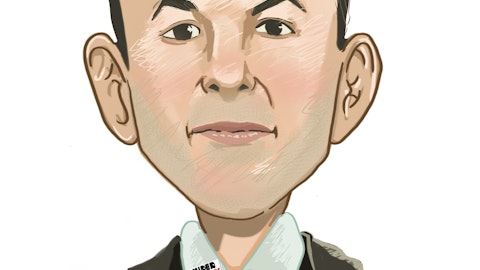After adjusting for an expected $0.05 of UAW strike-related impact, we have reduced our adjusted EPS midpoint by the same $0.05, which is in line with the low end of our previously provided range. As I will discuss later in the call, we expect significant growth next year. Our fourth quarter guidance provides a strong foundation for continued growth and earnings expansion in 2024. Page 11 summarizes the significant drivers of our third quarter adjusted earnings per share relative to the expectations we outlined on our second quarter call. In the third quarter, we drove strong financial performance, exceeding our previously provided expectations of above breakeven adjusted EPS performance by approximately $0.08 with adjusted EPS of $0.10 for the quarter.
Although we expected revenue to be down versus the second quarter due to normal seasonality, production volumes were slightly lower than expected, driving approximately $0.02 of headwind in the quarter. This was due primarily to a slower ramp-up in customer production related to certain electrified vehicle platforms and reduced demand in our commercial vehicle end markets. During the third quarter, gross margin outperformed our previous expectations due to reduced material costs, favorable sales mix, and favorable operating performance. Most notably, we saw material cost improvement versus prior expectations as supply chains have continued to normalize and the impact of previously negotiated price increases and material cost mitigation actions continue to positively impact our overall material costs.
During the quarter, we incurred approximately $0.02 of additional costs related to a specific distressed supplier. These incremental costs were required to provide additional support and prevent end customer disruption. Although we expect some additional costs to be incurred in the fourth quarter, we believe this issue is contained, which would result in relatively less impact in the fourth quarter. We are working to recover these incremental costs, but have not included the expectation of any recovery in our full-year 2023 guidance. SG&A and engineering spend was approximately in line with prior expectations as relatively higher costs incurred in the second quarter subsided to more normalized levels. This was due in part to reduced project launch-related expenses as our SMART2 tachograph launched in August as well as the continued optimization of our overall global engineering footprint and cost structure.
Third quarter performance was positively impacted by $0.05 due to the non-operating impact of foreign currency on intercompany loans. Similarly, third quarter performance was negatively impacted by approximately $0.04 due to incremental tax expense as a result of the change in jurisdictional mix of pretax earnings. In summary, not only did we exceed our previously outlined expectations, we remain on track for continued earnings expansion in the fourth quarter as we remain focused on improvement in our supply chains and material costs, efficiency in our manufacturing facilities, and optimization of our global cost structure. Page 12 summarizes our key financial metrics specific to Control Devices. Control Devices third quarter sales of $90.1 million decreased by 3.2% compared to the prior quarter due to lower sales in the North American passenger vehicle end market, primarily driven by reduced production for certain electrified vehicle platforms relative to the second quarter, partially offset by higher sales in China.
As Jim outlined previously, the UAW strike at Ford, GM and Stellantis had a minimal impact on our third quarter financial results, but are expected to have an impact on the fourth quarter, even though negotiations are now complete and customer production facilities are expected to ramp back up in November. Adjusted operating income was $5.6 million for the quarter or 6.2% of sales, which improved by approximately 40 basis points versus the prior quarter. The continued expansion was driven by higher gross margin, partially offset by the impact of the distressed supplier related expenses I discussed previously, which were approximately $700,000 during the quarter. For the remainder of the year, we will continue to focus on driving manufacturing performance efficiency and cost control to mitigate production volatility primarily resulting from the UAW strike.



